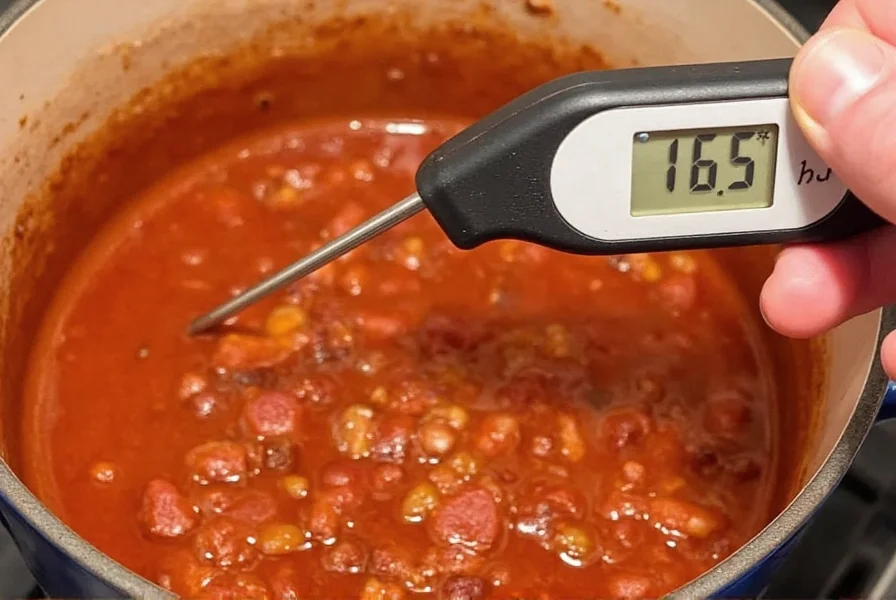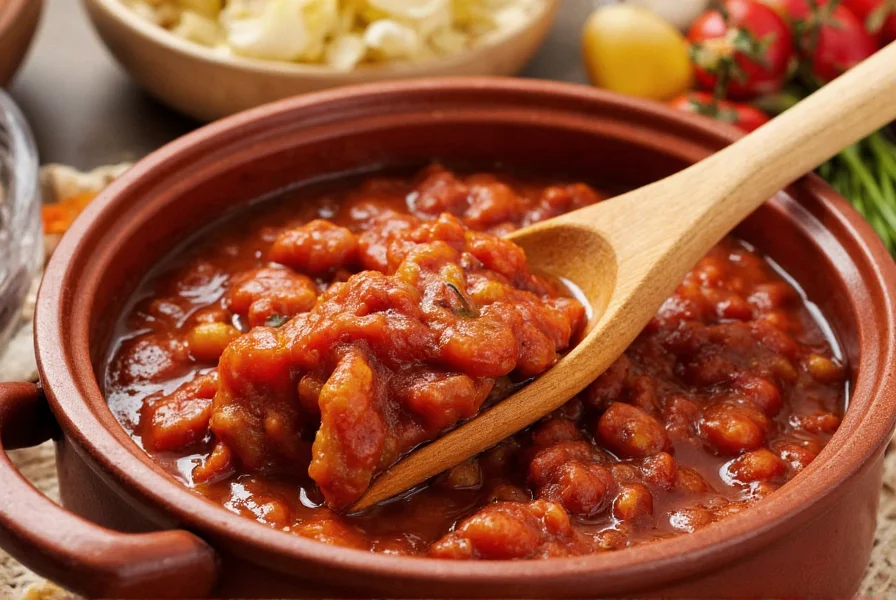Homemade chili is safe to eat for 3-4 days when properly stored in the refrigerator at or below 40°F (4°C). In the freezer, chili maintains best quality for 4-6 months. Never leave chili at room temperature for more than 2 hours (1 hour if ambient temperature exceeds 90°F/32°C), as this falls within the food safety danger zone where bacteria multiply rapidly.
Understanding proper food storage is essential for preventing foodborne illness while maximizing the enjoyment of your homemade meals. Chili, with its rich blend of proteins, vegetables, and spices, requires careful handling to maintain both safety and quality. Whether you've just prepared a large batch for game day or have leftovers from last night's dinner, knowing exactly how long chili remains safe to eat can prevent wasted food and potential health risks.
Refrigeration Guidelines for Homemade Chili
When stored correctly in airtight containers, freshly made chili will remain safe to eat for 3-4 days in the refrigerator. The key factors that determine how long chili stays fresh include proper cooling techniques, container selection, and consistent refrigerator temperature.
Immediately after cooking, chili should be cooled rapidly before refrigeration. Divide large batches into smaller portions in shallow containers to facilitate faster cooling. Never place a large pot of hot chili directly into the refrigerator, as this raises the internal temperature of your appliance and creates unsafe conditions for other stored foods.
| Storage Method | Safe Duration | Optimal Temperature |
|---|---|---|
| Refrigerator (properly stored) | 3-4 days | 40°F (4°C) or below |
| Freezer (airtight container) | 4-6 months | 0°F (-18°C) |
| Room temperature | 2 hours max (1 hour if >90°F) | 40°F-140°F (4°C-60°C) |
Freezing Chili for Long-Term Storage
Freezing represents the most effective method for preserving chili beyond the typical refrigerator timeframe. When properly frozen, chili maintains excellent quality for 4-6 months, though it remains safe indefinitely if kept at 0°F (-18°C).
For optimal results when freezing chili:
- Cool chili completely before freezing to prevent ice crystal formation
- Use airtight, freezer-safe containers with minimal headspace
- Alternatively, freeze in portion-sized containers for convenient thawing
- Label containers with date and contents
- Consider freezing in heavy-duty freezer bags laid flat for space efficiency
When you're ready to use frozen chili, thaw it overnight in the refrigerator rather than at room temperature. This gradual thawing process maintains food safety while preserving texture and flavor. Never refreeze chili that has been completely thawed, as this compromises both quality and safety.

Recognizing When Chili Has Spoiled
Even within recommended timeframes, chili can spoil prematurely if not stored properly. Always inspect chili before consuming by checking for these warning signs:
- Unpleasant odor: Sour, rancid, or otherwise unpleasant smells indicate bacterial growth
- Texture changes: Slimy consistency or separation that doesn't resolve with stirring
- Visible mold: Any fuzzy spots or discoloration on the surface
- Off taste: Sour or unpleasant flavor (only test after checking other indicators)
- Bubbling or fizzing: Signs of active fermentation or bacterial growth
When in doubt, throw it out. Consuming spoiled chili can cause food poisoning with symptoms including nausea, vomiting, diarrhea, and abdominal cramps. The USDA recommends discarding any food you're uncertain about rather than risking illness.
Best Practices for Storing and Reheating Chili
Maximize both safety and quality by following these professional storage recommendations:
- Cool rapidly: Divide large batches into portions no deeper than 2 inches for faster cooling
- Use proper containers: Glass or BPA-free plastic containers with tight-fitting lids
- Maintain consistent temperature: Ensure your refrigerator stays at or below 40°F (4°C)
- Reheat thoroughly: Bring chili to 165°F (74°C) internal temperature when reheating
- Stir during reheating: Ensures even heating and prevents cold spots
When reheating chili, add a small amount of liquid if it appears too thick, as moisture evaporates during storage. Avoid reheating chili multiple times, as each cooling and reheating cycle increases the risk of bacterial growth.

Special Considerations for Different Chili Types
Various chili recipes may have different shelf lives based on their ingredients:
- Meat-based chili: Follow standard 3-4 day refrigerator guideline
- Bean-only or vegetarian chili: May last slightly longer (4-5 days) due to lower protein content
- Chili with dairy: Shorter shelf life (2-3 days) if contains cheese, sour cream, or yogurt
- Chili with seafood: Consume within 1-2 days due to faster spoilage of seafood
Commercially canned chili follows different guidelines than homemade versions. Unopened cans typically remain safe for 2-5 years when stored in a cool, dry place. Once opened, treat canned chili the same as homemade regarding refrigeration timeframes.
Frequently Asked Questions
Can I eat chili that's been in the fridge for a week?
No, chili should not be consumed after 4 days in the refrigerator. Bacteria that cause foodborne illness can grow to dangerous levels without changing the food's appearance, smell, or taste. Even if the chili looks and smells fine, it's unsafe to eat after the recommended 3-4 day window.
How can I tell if frozen chili has gone bad?
Frozen chili that has developed freezer burn (dry, grayish-brown spots) may have compromised texture and flavor but remains safe to eat. However, if frozen chili shows signs of ice crystals melting and refreezing, has an off odor after thawing, or displays mold, it should be discarded. Properly frozen chili maintains best quality for 4-6 months.
What's the safest way to thaw frozen chili?
The safest method is to transfer frozen chili to the refrigerator 24-48 hours before you plan to eat it. This slow thawing process keeps the chili at a safe temperature throughout. Alternatively, you can thaw chili in a sealed bag submerged in cold water, changing the water every 30 minutes. Never thaw chili at room temperature, as this allows the outer layers to enter the danger zone while the center remains frozen.
Does adding more vinegar or acid extend chili's shelf life?
While acidic ingredients can slightly slow bacterial growth, they don't significantly extend chili's safe storage time. The USDA recommends following standard refrigeration guidelines regardless of recipe variations. Acidic ingredients might affect flavor development during storage but shouldn't be relied upon for food safety.
Can I store hot chili directly in the refrigerator?
No, placing hot chili directly in the refrigerator raises the internal temperature of your appliance, potentially compromising other stored foods. Instead, cool chili rapidly by dividing into shallow containers (no deeper than 2 inches) before refrigerating. The goal is to move chili through the danger zone (40°F-140°F) as quickly as possible.











 浙公网安备
33010002000092号
浙公网安备
33010002000092号 浙B2-20120091-4
浙B2-20120091-4